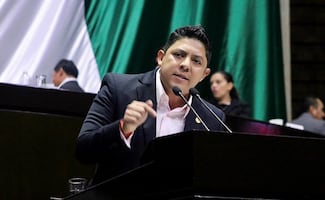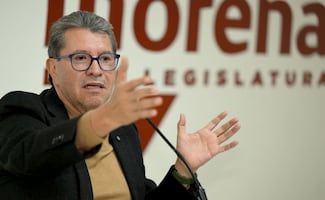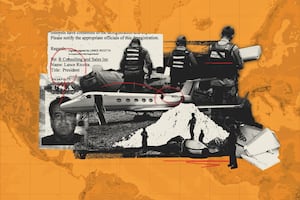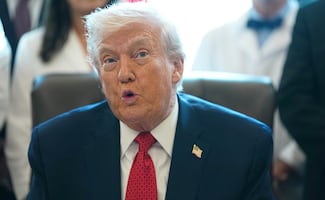Más Información

En SLP nunca ha existido una gobernadora y ahora hay una posibilidad real que así sea, asegura Ricardo Gallardo tras aprobación de "Ley Esposa"

Morena analiza disminución de pluris y elección popular de consejeros del INE: Monreal; serán revisadas en la reforma electoral, dice

Rastro de jets vinculados al narcotráfico lleva a un vendedor en California… y a un punto ciego de la regulación aérea en Estados Unidos

Secretaría Anticorrupción sanciona a dos empresas por buscar contratos con información falsa; imponen multa de miles de pesos

Banxico se despide de 2025 con otro recorte a la tasa de interés; queda en 7% por ajuste de 25 puntos base
With thunder threatening a delay, two NASA astronauts made their way to the launch pad for the liftoff of a SpaceX rocket ship Wednesday on a history-making flight to the International Space Station that was seen as a giant leap forward for the booming business of commercial space travel .

Space veterans Doug Hurley
and Bob Behnken were scheduled to ride into orbit aboard the brand-new Dragon capsule on top of a Falcon 9 rocket , from the same launch pad used by the Apollo moon missions a half-century ago.
Hurley
, 53, and Behnken , 49, are both two-time shuttle fliers.
NASA
hired SpaceX and Boeing in 2014 to transport astronauts to the space station in a new kind of public-private partnership . Development of SpaceX’s Dragon and Boeing’s Starliner capsules took longer than expected, however. Boeing’s craft is not expected to fly astronauts into space until early 2021.
“We’re doing it differently than we’ve ever done it before,” NASA Administrator Jim Bridenstine said. “We’re transforming how we do spaceflight in the future.”
Smiling, waving and giving the traditional thumbs-up, the two men met with Vice President Mike Pence and said farewell to their families—pantomiming an arms-wide hug for their sons from a coronavirus-safe distance —before setting out for the launch pad in a gull-wing Tesla SUV , another product from SpaceX’s visionary founder , Elon Musk .
Thunder could be heard rumbling as the convoy of vehicles made its way toward the rocket .
The flight would mark the first time a private company sent humans into orbit. It would also be the first time in nearly a decade that the United States launched astronauts into orbit from U.S. soil.
Ever since the space shuttle was retired in 2011, NASA has relied on Russian spaceships launched from Kazakhstan to take U.S. astronauts to and from the space station .
At midday, though, with four hours remaining before liftoff, launch controllers put the chances of acceptable weather for liftoff at just 50-50 because of rain, clouds and thunderstorms at NASA’s Kennedy Space Center . A tropical storm farther up the East Coast also complicated matters.
The preparations took place in the shadow of the coronavirus outbreak that has killed an estimated 100,000 Americans.
Recommended: Coronavirus COVID-19 Global cases mapped
“We’re launching American astronauts on American rockets from American soil . We haven’t done this really since 2011, so this is a unique moment in time,” Bridenstine said.
With this launch, he said, “everybody can look up and say, ’Look, the future is so much brighter than the present.′ And I really hope that this is an inspiration to the world.”
The mission would put SpaceX in the same league as only three countries— Russia , the U.S. , and China , which sent astronauts into orbit in that order.
Musk, wearing a mask and keeping his distance, chatted with the two NASA astronauts just before they left for the launch pad.
NASA
pushed ahead with the launch despite the viral outbreak but asked spectators to stay at home to lower the risk of spreading the virus . Beaches and parks along Florida’s Space Coast are open again, and local officials and businesses put out a socially distanced welcome mat. Signs along the main beach drag wished “ Godspeed SpaceX .”
Hours before the launch, cars and RVs already were lining the causeway in Cape Canaveral , with prime views of the pad.
President Donald Trump
also planned to fly into Kennedy , where the guest list was exceedingly limited because of the pandemic .
sg
Noticias según tus intereses
[Publicidad]
[Publicidad]








